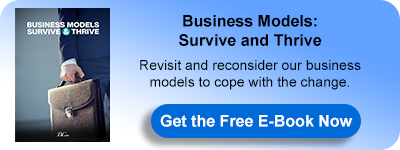The Soft and Hard Side of Implementing Business Model Innovation
Learning and change are at the heart of Innovation, often disruptive, hazardous, and costly. As a result, it is not unexpected that people and organizations create various cognitive, behavioral, and structural strategies for maintaining the status quo. To overcome this inertia, Innovation necessitates both energy and a willingness to challenge the status quo. Individual inventors who fight for their ideas against the odds, entrepreneurs who establish firms by risk-taking behavior, and organizations that manage to defy the accepted rules of the game are all examples of this.
The not-invented-here problem, in which an organization fails to see the potential of a new idea or decides that it does not fit its current business model, is also actual. In other cases, the organization does recognize the need for change yet underestimates it. For example, General Motors struggled to understand and interpret information about Japanese competitors. It preferred to believe that their access to US markets was due to unfair trade policies. Rather than recognizing the fundamental need for process innovation, Japan's "lean manufacturing" approach was bringing to the automobile industry.
The concept of 'core rigidities' is also significant at this point. We have grown accustomed to seeing core skills as a source of organizational strength. Still, the flip side is that having a high level of competence in particular areas can also prevent an organization from changing its mind. As a result, ideas that threaten the existing quo have an uphill battle to achieve acceptance; overcoming such barriers demands a lot of energy and enthusiasm. Finding measures to ensure that individuals with solid ideas may advance them without having to quit the organization is one of the priorities of successful innovative firms.1
The Innovative Thinking System™ (ITS)
Working on business model innovation while overcoming the resistance to change requires a simple, practical, creative, and systematic approach with a robust participatory process in place. Among the processes that come to the rescue is the ITS, the Innovation Thinking System™. 2
ITS allows all the stakeholders to be onboard to the process of innovation, fostering them to have a sense of ownership and commitment to the change. As the result, innovation will come into place.
1. Generating Ideas
To come down to the right new business model, incredibly large quantities of new concepts need to be generated in the first phase. During this idea generation process, people need to consider, "what that society would look like in the future", "what role are we taking in the future society". It is encouraged to come up with ambitious ideas to unleash innovation and release the organization from preconceived limitations. The more ideas, the more probability that the business model will succeed.
2. Narrowing Down Ideas
Having hundreds or thousands of ideas for new products or services are often necessary to reach a successful business and a new business model. However, it is impossible to try all of the ideas generated. The next step is to screen the ideas from different criteria. Each stakeholder has their priorities and interests, therefore the process of reaching a set of agreed criteria is not easy but yet critical. Choosing the best idea with confidence will motivate people and generate positive energy towards change.
3. Polish & Fine-Tuning Ideas
The idea selected needs to be attainable to be implemented and be sustainable to be worth the efforts of all the processes and investments. Not only emphasize the benefits of the new business model, but it also needs to be fine-tuned to minimize the anticipated risks and drawbacks.
There is no business without risk, but what information needs to be gathered to make sure unexpected facts that hinder the project will be not there. There is almost no idea without drawbacks, but what are the solutions for covering that downside?
4. Design Implementation Plan
A great business model that is carefully examined can be turn out to be a pie in the sky without an implementation. When we consider action plans for the implementation, we often just look at the hard side of the planning. However, considering the soft side of planning is also important, especially in the case of introducing the new business model, which may induce resistance to change. How to influence others by including the right influential power. How to maintain a win-win situation by having the priority and compromising points? What can be done to win support from others?
The above ITS techniques are very effective not only when implementing the new business models, but also when nurturing a healthy Innovation Culture in general.
1Managing Innovation, integrating technological, market, and organizational change, John Wiley, 4th Edition, Joseph Tidd, J R Bessant, 2009
2ITS, BCon, Accessed 19 Oct 2021, https://its.bconglobal.com/
For more about this topic, download our latest book " Business Models: Survive and Thrive " for FREE:
